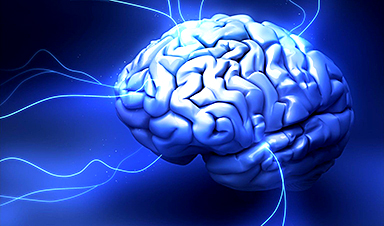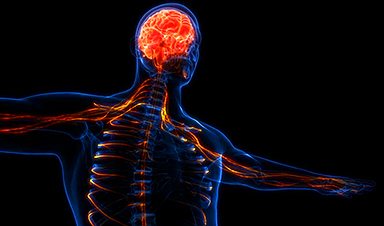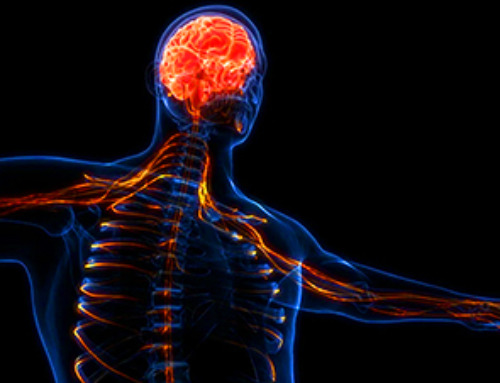Breathing is essential for survival, but taking in a breath of fresh air does more than just keep us alive.
"Breathe in… Breathe out…"
It's common knowledge that taking deep breaths can help calm us down in stressful situations. But now, Professor Micah Allen from the Department of Clinical Medicine at Aarhus University has made significant strides in understanding the relationship between breathing and the brain.
By synthesizing results from numerous studies on the brain imaging of rodents, monkeys, and humans, Allen and his team developed a computational model that explains how our breathing patterns can shape the expectations of the brain.
The study suggests that breathing is more than just something we do to stay alive, explains Micah Allen.
"It suggests that the brain and breathing are closely intertwined in a way that goes far beyond survival, to actually impact our emotions, our attention, and how we process the outside world. Our model suggests there is a common mechanism in the brain which links the rhythm of breathing to these events."
Breathing can affect our mental health
Understanding how breathing shapes our brain, and by extension, our mood, thoughts, and behaviors, is an important goal in order to better prevent and treat mental illness.
"Difficulty breathing is associated with a very large increase in the risk for mood disorders such as anxiety and depression. We know that respiration, respiratory illness, and psychiatric disorders are closely linked. Our study raises the possibility that the next treatments for these disorders might be found in the development of new ways to realign the rhythms of the brain and body, rather than treating either in isolation," explains Micah Allen.
Stabilizing our mind through breathing is a well-known and used tactic in many traditions such as yoga and meditation. The new study sheds light on how the brain makes it possible. It suggests that there are three pathways in the brain that control this interaction between breathing and brain activity. It also suggests that our pattern of breathing makes the brain more "excitable", meaning neurons are more likely to fire during certain times of breathing
New research to come
The new study gives researchers a new target for future studies in for example persons with respiratory or mood disorders, and Micah Allen and his group already have already started new projects based on the study.
"We have a variety of ongoing projects that are both building on and testing various parts of the model we have proposed. Ph.D. Student Malthe Brændholt is conducting innovative brain imaging studies in humans, to try and understand how different kinds of emotional and visual perception are influenced by breathing in the brain," says Micah Allen.
The team is also collaborating with the Pulmonology team at Aarhus University Hospital, where tools developed in the lab are used to understand whether a person suffering from long-covid may have disruptions in the breath-brain alignment. And there are more projects coming, says Micah Allen.
"We will be using a combination of human and animal neuroimaging to better understand how breathing influences the brain, and also utilizing exploring how different drugs influence respiratory-brain interaction. We would also like to someday study how lifestyle factors like stress, sleep, and even things like winter swimming influence breath-brain interaction. We are very excited to continue this research," says Micah Allen.
News
Nerve Damage Can Disrupt Immunity Across the Entire Body
A single nerve injury can quietly reshape the immune system across the entire body. Preclinical research from McGill University suggests that nerve injuries may lead to long-lasting changes in the immune system, and these [...]
Fake Science Is Growing Faster Than Legitimate Research, New Study Warns
New research reveals organized networks linking paper mills, intermediaries, and compromised academic journals Organized scientific fraud is becoming increasingly common, ranging from fabricated research to the buying and selling of authorship and citations, according [...]
Scientists Unlock a New Way to Hear the Brain’s Hidden Language
Scientists can finally hear the brain’s quietest messages—unlocking the hidden code behind how neurons think, decide, and remember. Scientists have created a new protein that can capture the incoming chemical signals received by brain [...]
Does being infected or vaccinated first influence COVID-19 immunity?
A new study analyzing the immune response to COVID-19 in a Catalan cohort of health workers sheds light on an important question: does it matter whether a person was first infected or first vaccinated? [...]
We May Never Know if AI Is Conscious, Says Cambridge Philosopher
As claims about conscious AI grow louder, a Cambridge philosopher argues that we lack the evidence to know whether machines can truly be conscious, let alone morally significant. A philosopher at the University of [...]
AI Helped Scientists Stop a Virus With One Tiny Change
Using AI, researchers identified one tiny molecular interaction that viruses need to infect cells. Disrupting it stopped the virus before infection could begin. Washington State University scientists have uncovered a method to interfere with a key [...]
Deadly Hospital Fungus May Finally Have a Weakness
A deadly, drug-resistant hospital fungus may finally have a weakness—and scientists think they’ve found it. Researchers have identified a genetic process that could open the door to new treatments for a dangerous fungal infection [...]
Fever-Proof Bird Flu Variant Could Fuel the Next Pandemic
Bird flu viruses present a significant risk to humans because they can continue replicating at temperatures higher than a typical fever. Fever is one of the body’s main tools for slowing or stopping viral [...]
What could the future of nanoscience look like?
Society has a lot to thank for nanoscience. From improved health monitoring to reducing the size of electronics, scientists’ ability to delve deeper and better understand chemistry at the nanoscale has opened up numerous [...]
Scientists Melt Cancer’s Hidden “Power Hubs” and Stop Tumor Growth
Researchers discovered that in a rare kidney cancer, RNA builds droplet-like hubs that act as growth control centers inside tumor cells. By engineering a molecular switch to dissolve these hubs, they were able to halt cancer [...]
Platelet-inspired nanoparticles could improve treatment of inflammatory diseases
Scientists have developed platelet-inspired nanoparticles that deliver anti-inflammatory drugs directly to brain-computer interface implants, doubling their effectiveness. Scientists have found a way to improve the performance of brain-computer interface (BCI) electrodes by delivering anti-inflammatory drugs directly [...]
After 150 years, a new chapter in cancer therapy is finally beginning
For decades, researchers have been looking for ways to destroy cancer cells in a targeted manner without further weakening the body. But for many patients whose immune system is severely impaired by chemotherapy or radiation, [...]
Older chemical libraries show promise for fighting resistant strains of COVID-19 virus
SARS‑CoV‑2, the virus that causes COVID-19, continues to mutate, with some newer strains becoming less responsive to current antiviral treatments like Paxlovid. Now, University of California San Diego scientists and an international team of [...]
Lower doses of immunotherapy for skin cancer give better results, study suggests
According to a new study, lower doses of approved immunotherapy for malignant melanoma can give better results against tumors, while reducing side effects. This is reported by researchers at Karolinska Institutet in the Journal of the National [...]
Researchers highlight five pathways through which microplastics can harm the brain
Microplastics could be fueling neurodegenerative diseases like Alzheimer's and Parkinson's, with a new study highlighting five ways microplastics can trigger inflammation and damage in the brain. More than 57 million people live with dementia, [...]
Tiny Metal Nanodots Obliterate Cancer Cells While Largely Sparing Healthy Tissue
Scientists have developed tiny metal-oxide particles that push cancer cells past their stress limits while sparing healthy tissue. An international team led by RMIT University has developed tiny particles called nanodots, crafted from a metallic compound, [...]





















